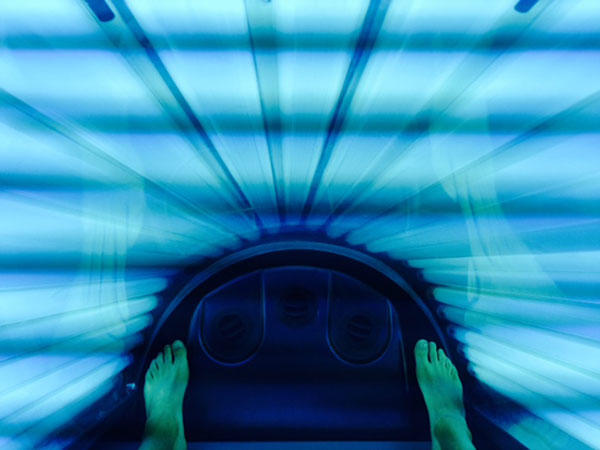U.S. Indoor Tanning Rates Are Dropping, But Still High
, by NCI Staff
The number of people who tan indoors appears to be dropping, according to a new study from researchers at NCI and the U.S. Centers for Disease Control and Prevention (CDC). But using indoor tanning devices such as sunlamps, sunbeds, or tanning booths, which-increases-skin-cancer-risk, is still a common practice, they reported.
Published online July 1 in JAMA Dermatology, the study estimates that about 1.6 million fewer women and 400,000 fewer men used indoor tanning devices between 2010 and 2013, a decrease from 5.5 percent to 4.2 percent among all adults.
"Although this drop in indoor tanning is encouraging, an estimated 7.8 million women and 1.9 million men continue use these devices," explained study coauthor Anne M. Hartman, of NCI’s Division of Cancer Control and Population Sciences.
Public health officials and researchers have become increasingly concerned about the health risks posed by indoor tanning. One recent study, for example, estimated that indoor tanning was responsible for approximately 420,000 skin cancer cases in the United States alone annually, more than 6,000 of which were melanomas. In the United States, reducing rates of indoor tanning is an objective for Healthy People 2020.
In this current study, the NCI and CDC researchers assessed the prevalence of indoor tanning using data from the CDC’s 2010 and 2013 National Health Interview Surveys.
The biggest decrease in indoor tanning rates was among women ages 18 to 29, in whom it dropped from 11.3 percent in 2010 to 8.6 percent in 2013. However, this group still represents the largest number of indoor tanners.
Indoor tanning rates also dropped for men ages 40 to 49, from 2.6 percent to 1.8 percent. Although compared with other age groups, both men and women, the frequency of indoor tanning among men in this group was nearly twice as high.
"This decrease in indoor tanning may be due to the public's increased awareness of its harms," Hartman said. "The ultraviolet rays that bronze skin eventually thin and damage it.
"Many people who tan indoors do it to get a so-called base tan," she continued, "in the belief that it might protect against skin damage from sun exposure during outdoor activities. But there is no such thing as a safe base tan, whether you tan outdoors or indoors."
Last year, citing the link between indoor tanning devices and skin cancer risk, the FDA reclassified the devices from Class I (low risk) to Class II (moderate to high risk), giving the agency greater regulatory control over their manufacture and use.
